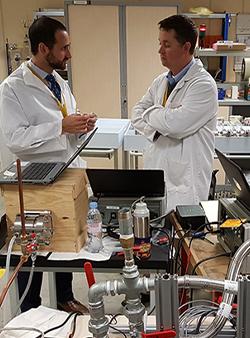
AMS Advocates for Relief from Unnecessary Oversight Among US Nuclear Power Plants
For nearly three decades, AMS has been a leading voice in the call for reducing manual pressure transmitter calibration checks in all US nuclear power plants. This call was repeated in the June edition of the American Nuclear Society’s trade publication Nuclear News. The article “Online Monitoring Technology to Extend Calibration Intervals of Nuclear Plant Pressure Transmitters,” written by AMS President and CEO Dr. H.M. Hashemian, describes how US nuclear power plants are required to manually check the calibration levels of pressure transmitters at the end of every fuel cycle, usually every 18 to 24 months. This is often an extensive process requiring technicians to travel throughout the plant to perform calibration checks on dozens of transmitters thereby extending the typical outage period and reducing the overall efficiency of the plant.
AMS maintains that the use of online monitoring technologies is more effective than manual calibration checks. Online monitoring uses currently available plant computer data to monitor sensor performance and to identify any sensors that may need to be recalibrated during the next outage. To support their argument against such demanding testing requirements, AMS has performed research demonstrations of OLM technologies in a dozen US nuclear plants over the past 20 years. During this time, AMS also led an effort to reform British nuclear power plant regulations which ultimately resulted in formal approval of OLM technologies in 2005 and has provided AMS with over 15 years of data that has continued to prove the excessive nature of US regulations.
AMS recently submitted a topical report to the US Nuclear Regulatory Commission (AMS-TR-0721R1) for approval to switch from traditional manual calibration checks to the OLM system of condition-based calibration. The topical report was approved by the NRC in November 2020 for a currently pending formal review then a safety evaluation to be performed by the NRC in late 2021 or early 2022.








